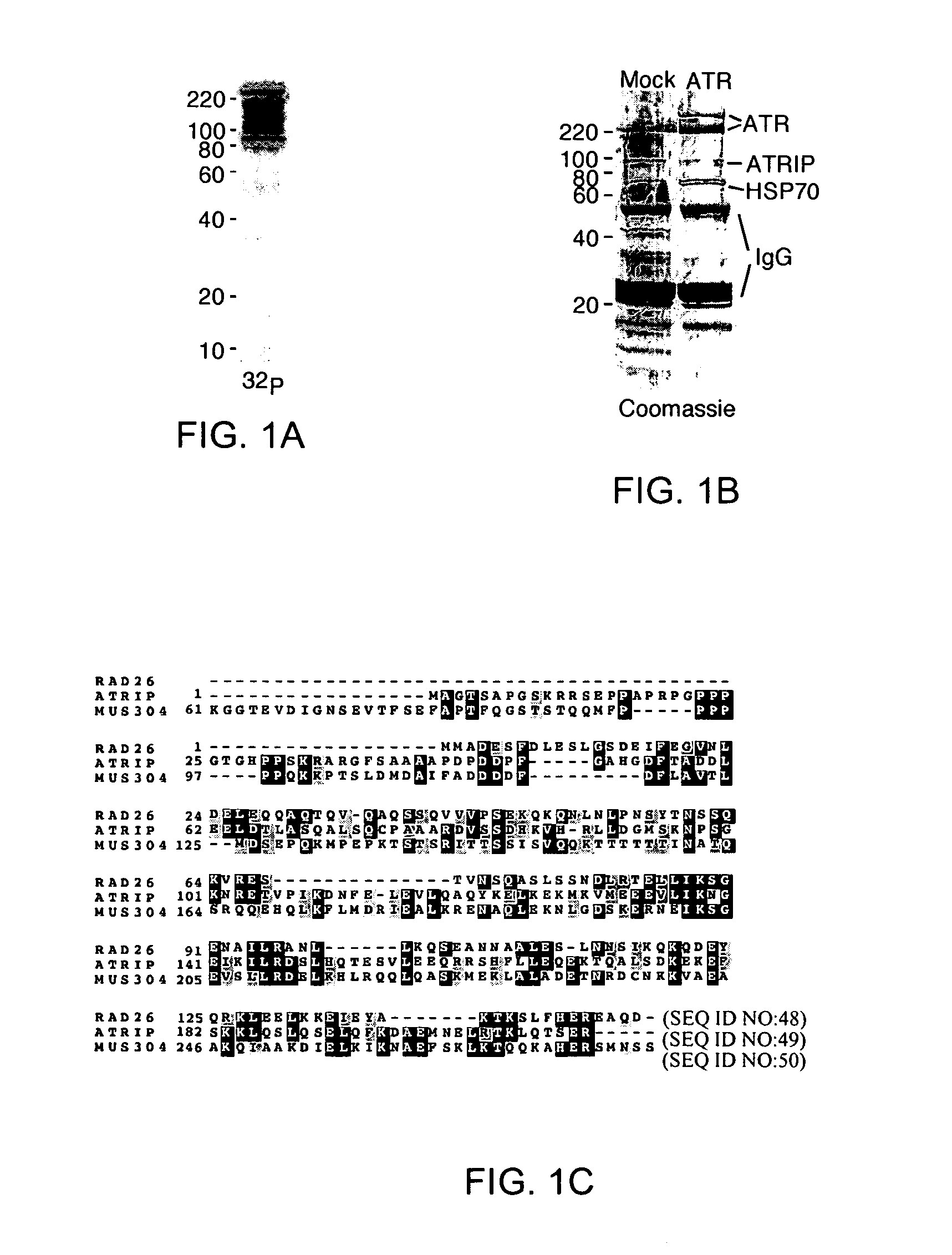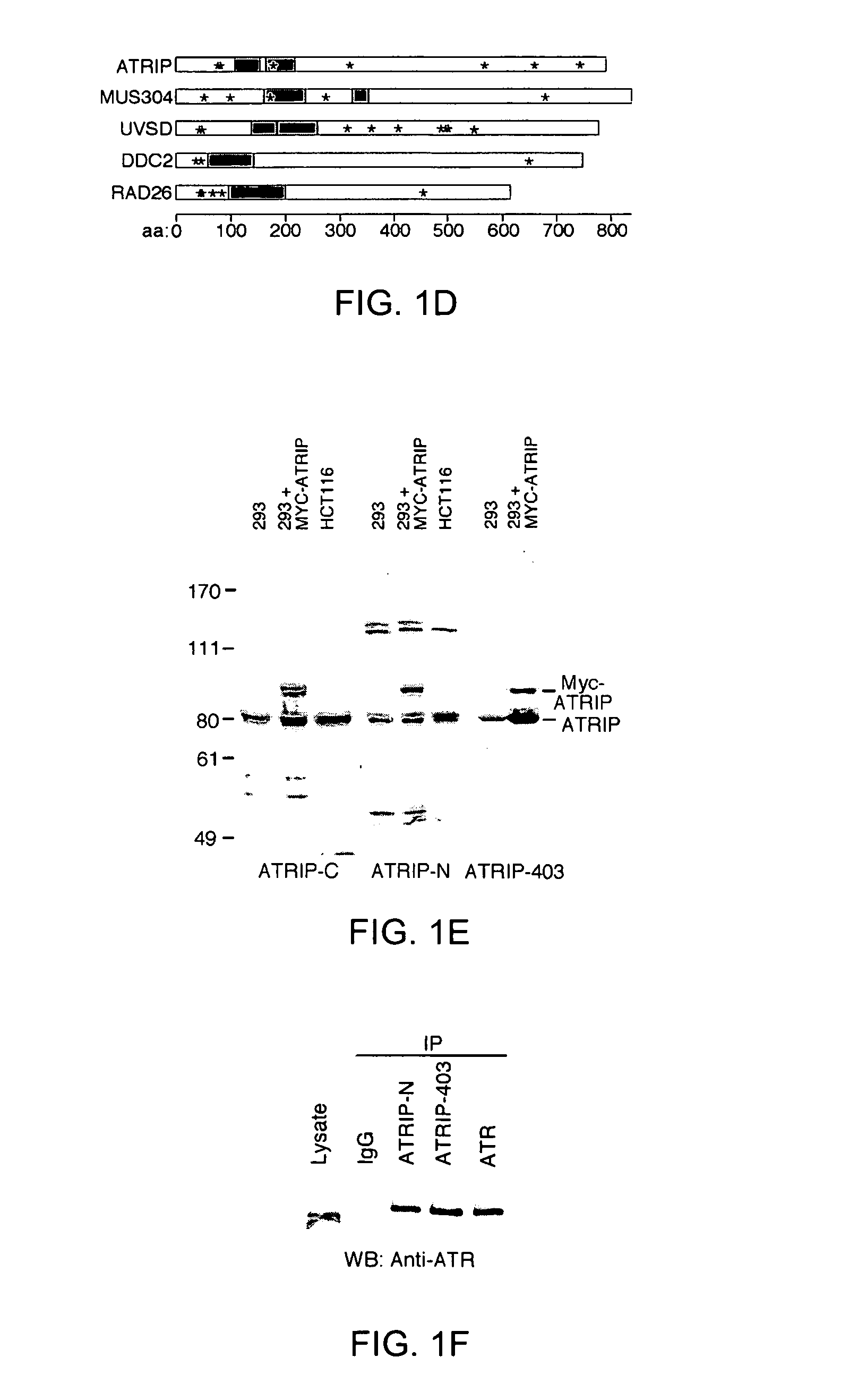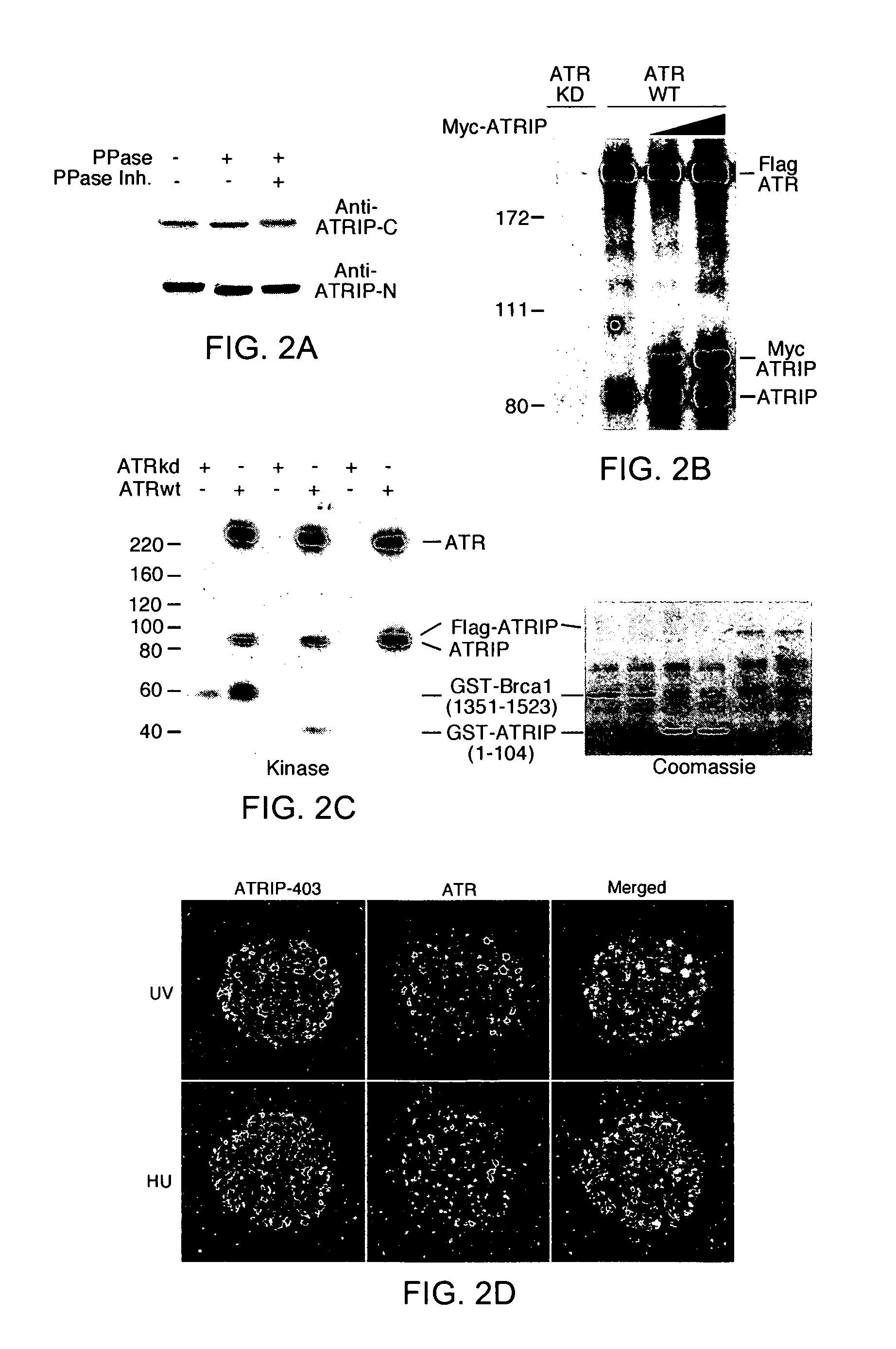Methods and compositions in checkpoint signaling
a technology of checkpoint signaling and composition, applied in the field of cellular biology, molecular biology, cancer, can solve the problems of impaired analysis of atr specific activity and lack of comparable cell lines, and achieve the effect of preventing or delaying the entry of a cell into mitosis
- Summary
- Abstract
- Description
- Claims
- Application Information
AI Technical Summary
Benefits of technology
Problems solved by technology
Method used
Image
Examples
example 1
Cloning and Characterization of ATRIP
[0337]In a search for substrates of ATM and ATR a protein with an apparent molecular size of 85 to 90 kD immunoprecipitated with ATR and incorporated 32P when ATR immunoprecipitates were incubated with [γ-32P]ATP (FIG. 1A). To identify this phosphoprotein ATR tagged with a Flag epitope was transiently overexpressed in 293T cells, the expressed ATR was immunoprecipitated, and the co-immunoprecipitating proteins were sequenced by mass spectrometry (FIG. 1B). In addition to peptides from heat shock protein 70, two peptides were identified, DSLHQTESVLEEQR (SEQ ID NO:19) and DTVLLLHGLSQK (SEQ ID NO:20), that corresponded to two expressed sequence tags (ESTs) in the National Center for Biotechnology Information Genbank database. By comparison of overlapping cDNAs and genomic sequence, both EST sequences were assigned to the same gene and designed primers to amplify and clone a full length cDNA. Sequencing of the cloned cDNA indicated that it encodes a ...
example 2
Confirmation of ATR and ATRIP Interaction
[0338]Co-transfection of Myc(3×)-tagged ATRIP cDNA with Flag-tagged ATR followed by reciprocal co-immunoprecipitation confirmed that the overexpressed proteins could associate in vivo. Anti-peptide antibodies to the NH2-terminus (ATRIP-N) and COOH-terminus (ATRIP-C) of ATRIP and polyclonal antiserum to GST-ATRIP (amino acids 1 to 107) purified from bacteria (ATRIP-403) were produced. Each of these antibodies recognized a protein with an apparent size between 80 and 85 kD in lysates of human cells separated by SDS-PAGE and a slightly larger protein in cells transfected with a Myc-ATRIP expression vector (FIG. 1E). The ATRIP-N and ATRIP-403 antibodies both co-immunoprecipitated ATR from 293T cell lysates (FIG. 1F). Under similar conditions an association of ATRIP with ATM has not been detected. Mapping of the ATRIP domain that binds ATR indicated that there may be multiple interaction domains including the coiled-coil domain between amino acids...
example 3
Subcellular Localization of ATRIP
[0340]ATR localizes to intra-nuclear foci that may correspond to sites of DNA synthesis and repair after cells have been treated with agents that cause DNA damage or stalling of replication forks (Tibbetts et al., 2000). Immunostaining using the ATRIP-403 antibody revealed that ATRIP is a diffuse nuclear protein that also re-distributes to intra-nuclear foci after treatment of cells with UV radiation, hydroxyurea (HU), or ionizing radiation (FIG. 2D). Co-staining with an antibody to ATR showed strong colocalization of ATRIP and ATR after treatment of cells with UV or HU. Expression of a green-fluorescent protein (GFP)-ATRIP fusion revealed similar intranuclear localization patterns, and siRNA inhibition of ATRIP expression indicated that the ATRIP-403 antibody specifically recognizes ATRIP in stained cells (see FIG. 5B).
PUM
| Property | Measurement | Unit |
|---|---|---|
| Composition | aaaaa | aaaaa |
| Nucleic acid sequence | aaaaa | aaaaa |
Abstract
Description
Claims
Application Information
 Login to view more
Login to view more - R&D Engineer
- R&D Manager
- IP Professional
- Industry Leading Data Capabilities
- Powerful AI technology
- Patent DNA Extraction
Browse by: Latest US Patents, China's latest patents, Technical Efficacy Thesaurus, Application Domain, Technology Topic.
© 2024 PatSnap. All rights reserved.Legal|Privacy policy|Modern Slavery Act Transparency Statement|Sitemap



